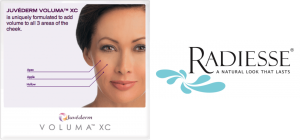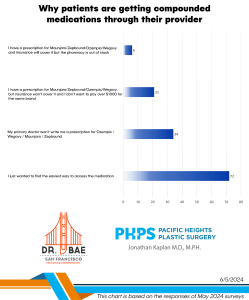
Looking to lift your jowls (hanging jaw line) and get fuller cheek bones at the same time? Fillers to the cheek bones can volumize the upper face and lift the jowls in unison. Radiesse and Juvederm Voluma are the most “famous” of fillers for this treatment.
How do fuller cheek bones affect the jowls?
By injecting Radiesse or Juvederm Voluma to the cheek bones, this fills the upper face. To be clear, this is along the cheek bones, not the cheeks themselves. Injecting into the cheeks themselves can give a chubby appearance. Whereas injecting higher on the face gives a heart-shaped face that is very attractive.
As you volumize the upper portion of the face, this pulls up the lower portion of the face as well. The jowls, the area along the jawline that begin to hang as we age, will lift as a result of these fillers. In the past, doctors would inject filler along the jawline to obscure the jowls. This can work but it can also make the jawline look heavier with so much filler. As an alternative, filler in the upper portion of the face addresses two issues – more prominent cheek bones and lifted jowls.
Radiesse and Juvederm Voluma have their pros and cons. Radiesse is a calcium-based filler that can last up to two years and comes in 1.5cc syringes (more than Juvederm Voluma). Even though there is more product in a Radiesse syringe, it’s less expensive than Juvederm Voluma. While Radiesse isn’t approved for use in the cheekbones like Juvederm Voluma, it’s not “illegal” to use it in that area. The biggest downside to Radiesse is it’s reversability, or lack thereof. For example, if there’s too much Radiesse in one area, you can’t dissolve it the way you can with Juvederm Voluma.
In contrast, Juvederm Voluma is FDA approved for use along the cheekbones. It also lasts up to two years. While it only comes in 1cc syringes, it still costs more than Radiesse. And if you need to dissolve Juvederm Voluma, you can with a product called hyaluronidase. Now that you know the pros and cons, you can check pricing for these different fillers from Dr. Kaplan here.
Talk to your doctor and see what they recommend for you.
Click here for the original blog post written by Dr. Jonathan Kaplan for BuildMyBod.




